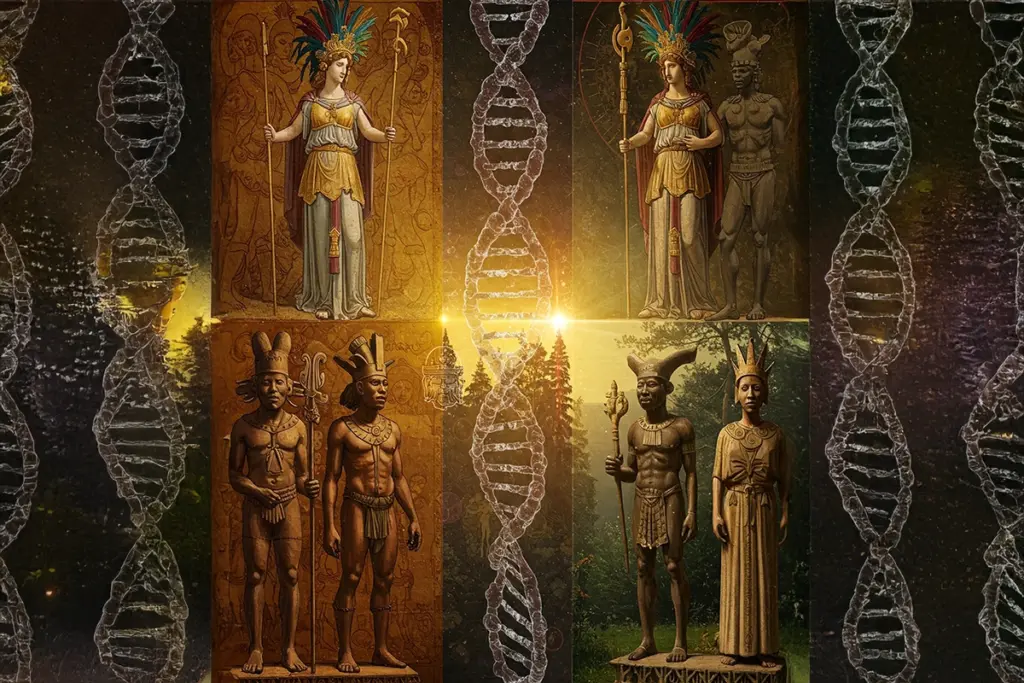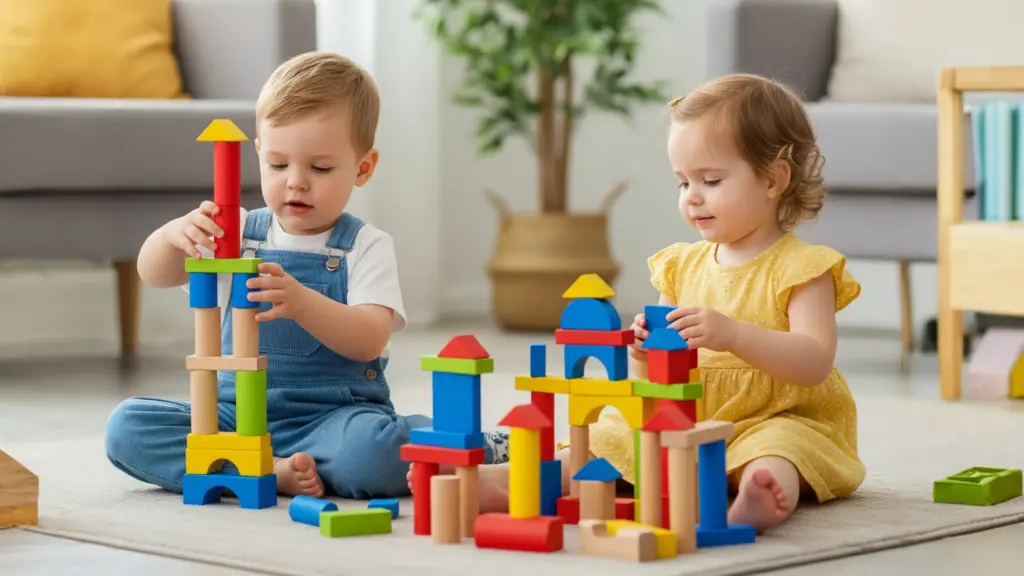Why have twins in mythology and folklore fascinated cultures for thousands of years? From ancient gods to heroic pairs, twins have been celebrated as symbols of balance, feared as omens, or even worshipped as protectors. These stories aren’t just myths—they shape how societies view twins today, influencing everything from parenting advice to cultural traditions.
In this article, you’ll discover:
- How twins in mythology and folklore became legends in Greek, Egyptian, and Norse cultures.
- Why some cultures feared twins while others revered them.
- Practical ways to teach your twins about their cultural heritage.
Let’s dive into the captivating world of twins in mythology and folklore—and uncover what these tales mean for parents raising twins today.
Twins in Ancient Mythology
Ancient civilizations often saw twins as magical, mysterious, or divine. Here’s how three major cultures wove twins into their myths:
1. Greek and Roman Mythology: Gods of Balance
In Greek myths, twins symbolized duality. Apollo (sun god) and Artemis (moon goddess) represented light and darkness, day and night. Their bond showed how opposites could coexist harmoniously.
The Romans took this further with Romulus and Remus, the twin founders of Rome. Their story blended brotherly love and rivalry, reflecting themes of power and destiny.
Key takeaway: Ancient Greeks and Romans saw twins as symbols of balance—a lesson for parents celebrating their twins’ unique personalities.
2. Egyptian Mythology: Cosmic Twins
Egyptians linked twins to creation itself. Shu (air) and Tefnut (moisture) were twin deities born from the sun god Ra. Together, they created the sky and earth, showing how twins could shape the world.
Twins in Egypt were also tied to protection. Many pharaohs built temples honoring twin gods to guard their kingdoms.
Key takeaway: For Egyptians, twins weren’t just special—they were cosmic forces.
3. Norse Mythology: Twins of Prosperity
Norse myths featured Freyr and Freyja, twin gods of fertility and prosperity. Farmers prayed to them for good harvests, while families sought their blessings for healthy children.
These twins symbolized hope and abundance, proving that ancient cultures often tied twins to community well-being.
Key takeaway: Norse myths remind us twins have long been seen as bringers of good fortune.
What’s Next?
From divine duos to heroic pairs, ancient myths laid the groundwork for how we see twins. But stories didn’t stop there. Next, we’ll explore heroic twins in global folklore—including Maya warriors and West African protectors—and what they teach us about resilience and pride.
3. Heroic Twins in Global Folklore
From underworld battles to spiritual guardians, twins have starred as heroes in stories worldwide. Let’s explore three legendary pairs and their timeless lessons.
Mayan Hero Twins: Defenders of Humanity
In Mayan mythology, Hunahpu and Xbalanque defeated the lords of the underworld in a ballgame battle. Their story, told in the Popol Vuh, symbolizes courage and teamwork.
Key takeaway: Teach your twins collaboration through stories of shared goals.
Yoruba Ibeji: Protectores of Twins
In West Africa, the Yoruba people honor twins with Ibeji statues. These carved figures represent the souls of twins who passed young, believed to protect living siblings.
Key takeaway: Celebrate your twins’ bond with cultural rituals that honor their connection.
Navajo Hero Twins: Slayers of Monsters
The Navajo tell of Monster Slayer and Born-for-Water, twins who rid the world of giants. Their tale emphasizes resilience and justice.
Key takeaway: Use folklore to inspire bravery and problem-solving in your twins.
4. Twins as Omens: Fear and Superstition
Not all cultures celebrated twins. Many saw them as bad luck—or even cursed. Here’s why some societies feared twins.
Medieval Europe: Twins and Witchcraft
Twins were often linked to witchcraft in medieval Europe. People believed twins shared a soul or that one was a “demon double.”
Key takeaway: Combat outdated stereotypes by teaching your twins their uniqueness is a strength.
Asian Myths: Balance and Discord
In Chinese folklore, twins symbolized Yin and Yang. But imbalances (e.g., one twin thriving, one sickly) were seen as bad omens.
Key takeaway: Reject myths that label twins as “good” or “bad.” Celebrate their individuality.
Colonial Africa: Persecution of Twin Mothers
In parts of 19th-century Africa, colonial beliefs led to the persecution of mothers of twins. Some were forced to abandon one child.
Key takeaway: Educate others about harmful myths to protect your family from judgment.
What’s Next? From fear to reverence, twins have shaped cultural beliefs for millennia. In the next section, we’ll uncover twins in religion—from Hindu healers to Christian apostles—and their enduring legacies.
5. Twins in Religion: Sacred Symbols and Divine Pairs
From ancient temples to modern churches, twins have held sacred roles in religious stories. Let’s explore how faiths worldwide honored—and sometimes feared—twin bonds.
Christianity: Apostles and Rivals
The Bible features twin-like pairs, such as Thomas and Jude, apostles often linked as spiritual “twins.” The story of Jacob and Esau—twins who battled over birthrights—teaches lessons about rivalry and reconciliation.
Key takeaway: Use these stories to discuss conflict resolution with your twins.
Hinduism: The Ashvins, Healers of the Vedas
In Hindu texts, the Ashvins are twin gods of medicine and dawn. They rode golden chariots, curing diseases and symbolizing hope. Devotees still pray to them for health.
Key takeaway: Celebrate your twins’ teamwork by sharing tales of the Ashvins’ kindness.
Buddhism: Twin Miracles of Enlightenment
Legend says Buddha’s birth was marked by twin miracles: his mother dreamed of a white elephant, and he took seven steps at birth, each blooming a lotus. These stories highlight twins as signs of destiny.
Key takeaway: Frame your twins’ milestones as part of a larger, meaningful journey.
6. Modern Cultural Perceptions: From Myths to Movies
Today, twins star in blockbusters, books, and social media—but ancient myths still shape how we see them. Here’s how old stories influence modern twin stereotypes.
Pop Culture Icons: Twins in the Spotlight
From Mary-Kate and Ashley Olsen to Tia and Tamera Mowry, twins dominate entertainment. Their fame mirrors ancient myths, where twins symbolized duality (e.g., good vs. evil, shy vs. outgoing).
Key takeaway: Encourage your twins to define themselves beyond “the smart one” or “the funny one.”
Literature and Film: Twin Tropes
Books like The Shining (haunted twins) and movies like Parent Trap (twin switcheroos) recycle old myths. While entertaining, these tropes can fuel stereotypes about twins being “creepy” or “tricksters.”
Key takeaway: Balance fun stories with real-life examples of diverse twin relationships.
Parenting Insights: Breaking Stereotypes
Many parents of twins face questions like, “Can they read each other’s minds?” Combat myths by:
- Sharing facts (e.g., twin telepathy isn’t scientifically proven).
- Highlighting your twins’ individuality.
- Using folklore to celebrate their bond without pigeonholing them.
Key takeaway: Teach others—and your twins—that their connection is unique, not mythical.
What’s Next?
From ancient temples to TikTok fame, twins have always captivated imaginations. In the next section, we’ll share practical lessons for parents, including how to use myths to teach cultural pride and resilience.
7. Lessons for Parents of Twins
How can ancient myths help you raise modern twins? From celebrating their bond to rejecting stereotypes, folklore offers timeless wisdom for today’s families.
1. Embrace Individuality
Myths often split twins into “opposites” (light/dark, good/evil). Break this mold by:
- Avoiding comparisons like “the smart twin” or “the athletic one.”
- Encouraging separate hobbies and friendships.
2. Celebrate Cultural Roots
Share stories like the Yoruba Ibeji or Mayan Hero Twins to teach pride in their heritage. Visit museums or festivals highlighting twin lore.
3. Combat Stereotypes
When others ask, “Do they read each other’s minds?” respond with facts:
- Twin telepathy isn’t proven, but close bonds are common.
- Myths ≠ reality—your twins define their own connection.
4. Use Stories to Build Resilience
Tell tales like the Navajo Monster Slayers to inspire problem-solving. Frame challenges as adventures they can tackle together.
Resource Tip: Books like Twins in Folklore: A Parent’s Guide blend myths with parenting advice.
8. FAQs About Twins in Mythology and Folklore
Got questions? We’ve got answers. Here’s what parents ask most about twins’ cultural legacies.
Why were twins feared in some cultures?
Many societies saw twins as unnatural (e.g., “two babies, one soul”) or blamed them for crop failures. Colonial biases worsened these fears.
Are there cultures that still revere twins?
Yes! The Yoruba people (Nigeria) celebrate twins with festivals and carved Ibeji statues. Many Hindu families pray to the Ashvins for health.
How do I handle negative twin stereotypes?
Educate gently: “Actually, twins aren’t ‘psychic’—but they do share a special bond!” Share positive myths to shift the conversation.
Where can I learn more about twin folklore?
Check out *The Twin Legends* by P. S. Alter or visit the World History Encyclopedia.
Final Thoughts
Twins have inspired awe, fear, and fascination for millennia. By understanding these stories, you can honor your twins’ unique bond while challenging outdated myths.
Explore More:
- Dive into twin parenting tips with our guide Raising Twins: Breaking Myths, Building Bonds.
- Join our community to share your family’s twin tales!




